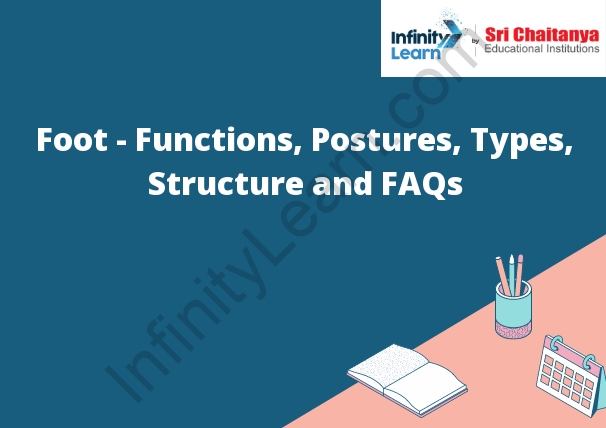Table of Contents
Introduction to Foot
The foot is the lower extremity of the leg below the ankle, on which a person stands and walks. The foot is composed of the ankle, the heel, the arch, and the toes. The ankle is the joint between the foot and the leg. The heel is the bone at the back of the foot. The arch is the curved part of the foot. The toes are the five small bones at the front of the foot.
There are 26 bones in the foot. These are the ankle bone (also called the tarsus), the five metatarsal bones, and the 20 phalanges bones. The five metatarsal bones are the long bones that lead up to the toes. The phalanges bones are the small bones in the toes.
The foot is composed of many muscles. The most important muscles in the foot are the gastrocnemius, the soleus, and the tibialis posterior. The gastrocnemius is the large muscle in the calf. The soleus is the small muscle in the calf. The tibialis posterior is the muscle on the back of the lower leg. It helps to lift the foot and turn it inwards.

Functions of Foot
The foot has many important functions. It serves as a shock absorber when we walk or run, it helps us balance, and it propels us forward when we walk or run. The foot also helps us change direction when we walk or run.
Plantigrade locomotion
Plantigrade locomotion is a method of terrestrial locomotion in which the foot is placed flat on the ground, as opposed to locomotion on the tips of the toes (digitigrade) or on the balls of the feet (unguligrade). Most mammals exhibit plantigrade locomotion, as do humans.
Digitigrade
locomotion is a type of locomotion that is used by animals that walk on their toes, such as dogs, cats, and horses. This type of locomotion is more efficient than plantigrade locomotion, which is used by animals that walk on their heels, such as humans. In digitigrade locomotion, the animal’s body weight is supported by their toes, which makes it easier for them to move quickly and efficiently.
Unguligrade locomotion
Unguligrade locomotion is a form of terrestrial locomotion where the animal moves by pushing off the ground with its hooves, cloven hooves, or nails.
Structure of a Human Foot
The human foot is a complex structure that is composed of 26 bones, 33 joints, and over 100 muscles, tendons, and ligaments. The bones of the foot are arranged into three main sections: the hindfoot, the midfoot, and the forefoot. The hindfoot consists of the talus and the calcaneus, the two largest bones in the foot. The midfoot contains the navicular, the cuboid, and the three cuneiform bones. The forefoot contains the five metatarsal bones and the fourteen phalanges.
The foot is a weight-bearing structure that helps to propel the body forward when walking or running. The bones of the foot are arranged to provide stability and distribute weight evenly across the foot. The muscles and tendons of the foot are responsible for movement and flexibility. The ligaments of the foot provide support and stability.
Hindfoot varus
A hindfoot varus is a condition in which the ankle joint is angled inward, towards the midline of the body. This condition can cause pain and difficulty walking. Treatment may include physical therapy, bracing, or surgery.
Midfoot Strike
When you land on the balls of your feet, as if you’re about to take off again, you’re landing in a midfoot strike. This is a more natural way to run, as it allows you to use more of your foot to push off the ground. It also puts less stress on your knees and ankles.
Forefoot width
The width of the foot at the widest point.
Tarsus:
The Tarsus is a small, fast-moving fish found in the Atlantic Ocean. It has a long, thin body and a pointed snout. The Tarsus is a predatory fish and eats small fish and crustaceans.
Metatarsus:
the part of the foot between the ankle and the toes
Metatarsalgia: a condition that results in pain in the metatarsal region of the foot
Phalanges:
There are three bones in each finger: the proximal phalanx, the middle phalanx, and the distal phalanx.
Muscles
The muscles of the body can be divided into three categories: skeletal muscles, cardiac muscles, and smooth muscles.
Skeletal muscles are attached to the bones of the skeleton and are responsible for the movement of the skeleton. Cardiac muscles are found in the heart and are responsible for the beating of the heart. Smooth muscles are found in the walls of the hollow organs of the body and are responsible for the movement of substances through these organs.
The muscles of the body can be further divided into two types: striated muscles and smooth muscles.
Striated muscles are muscles that have a striped appearance when viewed under a microscope. These muscles are voluntary muscles, meaning that they are controlled by the brain. Striated muscles are found in the skeletal muscles and the cardiac muscles.
Smooth muscles are muscles that do not have a striped appearance when viewed under a microscope. These muscles are involuntary muscles, meaning that they are not controlled by the brain. Smooth muscles are found in the walls of the hollow organs of the body and are responsible for the movement of substances through these organs.
Tendon
A tendon is a band of strong, fibrous tissue that connects muscle to bone.
Ligaments
The knee joint is stabilized by ligaments. The medial collateral ligament (MCL) is on the inside of the knee and the lateral collateral ligament (LCL) is on the outside of the knee. The anterior cruciate ligament (ACL) and the posterior cruciate ligament (PCL) cross in the middle of the knee.









